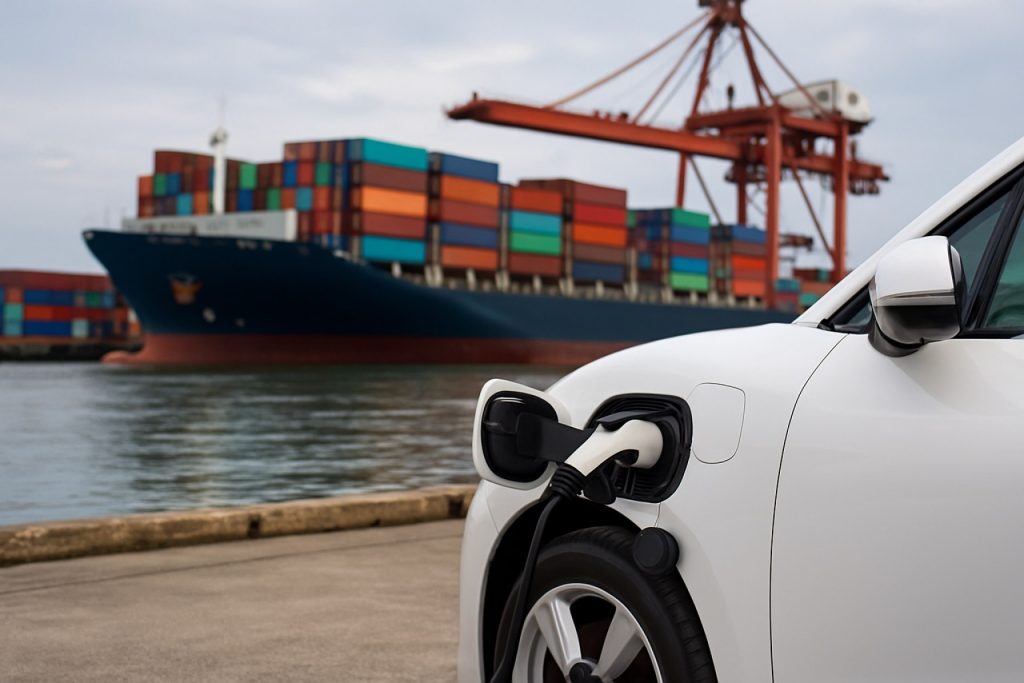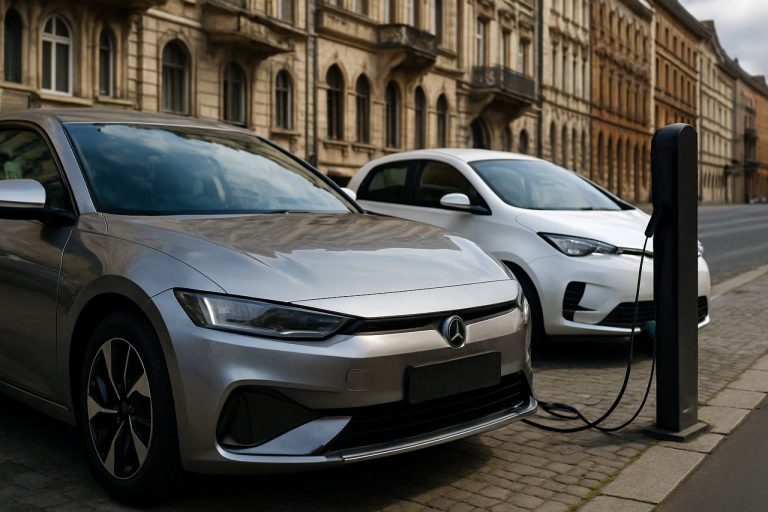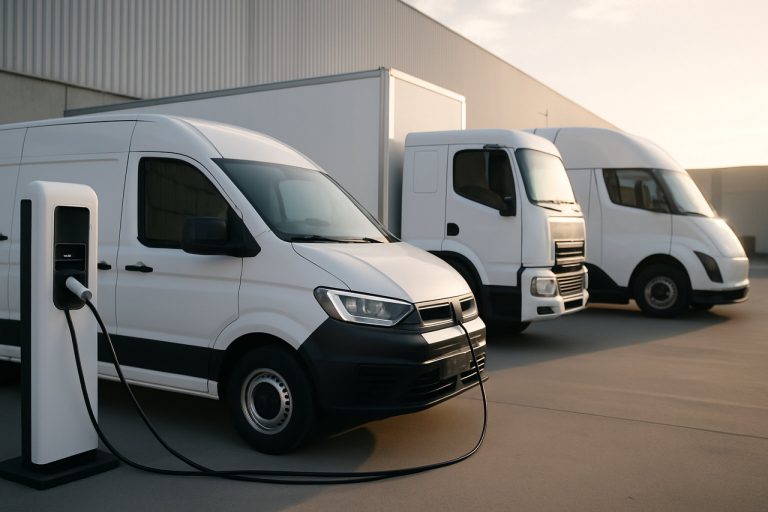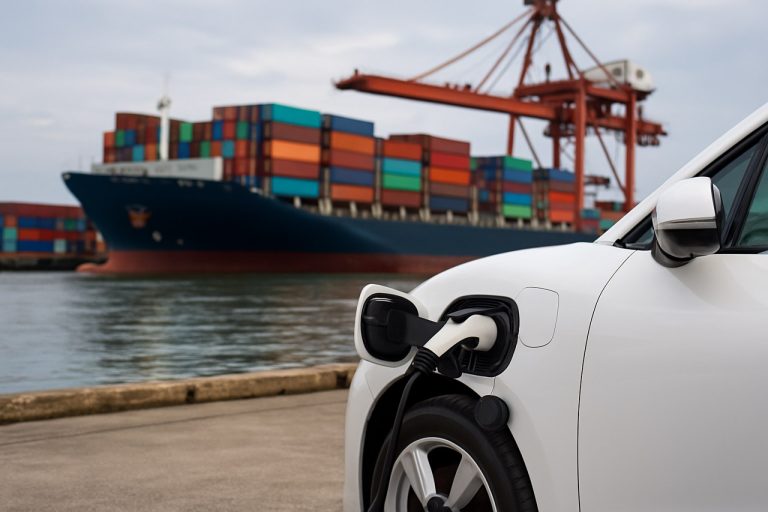
Electric Vehicle Export & Import Markets in 2025: Navigating Explosive Growth, Shifting Trade Dynamics, and the Next Era of Global EV Commerce. Discover How Policy, Technology, and Demand Will Reshape International Flows.
- Executive Summary: Key Trends and 2025 Outlook
- Global EV Export & Import Market Size and 2025–2030 Growth Forecasts
- Major Exporting and Importing Countries: Leaders and Emerging Players
- Trade Policy, Tariffs, and Regulatory Impacts on EV Flows
- Technological Innovations Driving Export Competitiveness
- Battery Supply Chains and Critical Raw Material Trade
- OEM Strategies: Partnerships, Localization, and Market Entry
- Infrastructure and Logistics: Overcoming Cross-Border Barriers
- Sustainability, Standards, and Certification in International EV Trade
- Future Outlook: Market Opportunities, Risks, and Strategic Recommendations
- Sources & References
Executive Summary: Key Trends and 2025 Outlook
The global electric vehicle (EV) export and import markets are undergoing rapid transformation as governments, manufacturers, and consumers accelerate the shift toward electrification. In 2025, the international trade of EVs is expected to reach new heights, driven by surging demand in both established and emerging markets, evolving regulatory frameworks, and intensifying competition among leading automakers.
China remains the dominant force in EV exports, leveraging its robust manufacturing ecosystem and cost advantages. In 2024, Chinese automakers such as BYD Company Limited and SAIC Motor Corporation significantly expanded their overseas shipments, with Europe and Southeast Asia as primary destinations. BYD in particular has established itself as a global leader, exporting both passenger and commercial EVs to over 70 countries. The European Union, meanwhile, has responded with increased scrutiny and potential tariffs on Chinese EV imports, aiming to protect local manufacturers and ensure fair competition.
Europe continues to be a major importer of EVs, with countries like Germany, France, and the Netherlands leading the charge. European automakers, including Volkswagen AG and Stellantis N.V., are ramping up production and exports of their own electric models, targeting both intra-European trade and markets in North America and Asia. The United States, while primarily focused on domestic EV production, is also seeing increased imports from both Europe and Asia, particularly as consumer preferences diversify and supply chains globalize.
Japan and South Korea, home to major players like Nissan Motor Corporation and Hyundai Motor Company, are expanding their export footprints, especially in regions with growing EV adoption such as Australia, Southeast Asia, and the Middle East. These companies are investing in new models and battery technologies to enhance their competitiveness in the global market.
Looking ahead to the remainder of 2025 and beyond, the EV export and import landscape is expected to become even more dynamic. Key trends include the localization of production to circumvent trade barriers, the rise of new export hubs in Southeast Asia and India, and the increasing importance of battery supply chains in shaping trade flows. As governments worldwide implement stricter emissions standards and incentivize EV adoption, cross-border trade in electric vehicles is poised for sustained growth, with established and emerging players vying for market share in a rapidly evolving global ecosystem.
Global EV Export & Import Market Size and 2025–2030 Growth Forecasts
The global electric vehicle (EV) export and import market is experiencing rapid transformation, driven by surging demand, evolving regulatory frameworks, and shifting supply chain dynamics. In 2025, the total value of cross-border EV trade is projected to exceed $100 billion, with China, the European Union, and the United States emerging as the principal players in both exports and imports. The market is expected to maintain a robust compound annual growth rate (CAGR) of 15–20% through 2030, as governments intensify decarbonization efforts and automakers expand international EV portfolios.
China remains the world’s largest EV exporter, accounting for over 60% of global EV exports in 2024 and expected to maintain its dominance through 2025 and beyond. Major Chinese manufacturers such as BYD Company Limited and SAIC Motor Corporation have aggressively expanded their overseas shipments, targeting Europe, Southeast Asia, and Latin America. In 2023, BYD Company Limited alone exported more than 240,000 EVs, a figure anticipated to rise further as new production facilities come online in Europe and Southeast Asia.
The European Union is both a significant importer and exporter of EVs. Germany, France, and Sweden are leading exporters within the bloc, with companies like Volkswagen AG and Volvo Car Corporation shipping substantial volumes to North America and Asia. Simultaneously, the EU is a major importer of Chinese EVs, with imports rising sharply in 2024 and expected to continue growing in 2025, despite ongoing discussions about tariffs and local content requirements.
The United States, while primarily an importer of EVs from Europe and Asia, is ramping up its export capacity as domestic production scales. Tesla, Inc. remains the leading U.S. EV exporter, shipping vehicles from its Fremont and Austin plants to Europe and Asia. U.S. imports of EVs, particularly from BMW Group and Hyundai Motor Company, are also expected to grow as consumer demand accelerates.
Looking ahead to 2030, the global EV export and import market is forecast to surpass $250 billion in annual trade value. Key growth drivers include the proliferation of free trade agreements, the establishment of new overseas manufacturing hubs by leading automakers, and the harmonization of safety and emissions standards. However, the market outlook remains sensitive to geopolitical tensions, evolving trade policies, and the pace of battery technology localization.
Major Exporting and Importing Countries: Leaders and Emerging Players
The global electric vehicle (EV) export and import landscape in 2025 is characterized by a dynamic interplay between established leaders and rapidly emerging players. China remains the dominant force in EV exports, leveraging its vast manufacturing capacity, integrated supply chains, and aggressive international expansion strategies. According to data from SAIC Motor—one of China’s largest automakers—Chinese brands such as SAIC, BYD Company, and Geely Holding Group have significantly increased their overseas shipments, with Europe and Southeast Asia as primary destinations. In 2024, China exported over 1.2 million EVs, and this figure is projected to rise further in 2025 as new models and brands enter global markets.
Europe, while a major importer of Chinese EVs, is also a significant exporter, particularly from Germany, France, and Sweden. Companies like Volkswagen AG, BMW Group, and Volvo Cars (owned by Geely) are expanding their export footprints, targeting North America and Asia-Pacific. The European Union’s focus on sustainability and emissions reduction has spurred both domestic production and imports, with the region expected to remain a key global EV hub through 2025 and beyond.
The United States, led by Tesla, Inc., is both a major exporter and importer of EVs. Tesla’s Gigafactories in California and Texas supply vehicles to Europe and Asia, while the U.S. also imports models from European and Asian manufacturers. The implementation of the Inflation Reduction Act and related incentives is expected to boost domestic production and reduce reliance on imports, but cross-border trade will remain significant, especially for premium and specialized models.
Emerging players are reshaping the EV trade landscape. South Korea, with Hyundai Motor Company and Kia Corporation, has increased exports to Europe and North America, capitalizing on advanced battery technology and competitive pricing. Meanwhile, Vietnam’s VinFast Auto Ltd. is rapidly expanding its export operations, targeting the U.S. and European markets with new models and aggressive marketing.
Looking ahead, the EV export and import markets are expected to become more competitive as new entrants from India, Turkey, and Southeast Asia ramp up production. Trade policies, local content requirements, and evolving consumer preferences will shape the global flow of EVs, with established leaders facing increasing competition from agile, tech-driven newcomers.
Trade Policy, Tariffs, and Regulatory Impacts on EV Flows
The global electric vehicle (EV) export and import landscape in 2025 is being shaped by a complex interplay of trade policies, tariffs, and regulatory frameworks. As governments seek to balance domestic industry growth with international competitiveness, these measures are having significant impacts on the direction and volume of EV flows worldwide.
One of the most consequential developments is the escalation of tariffs between major economies. In 2024, the European Union announced provisional tariffs of up to 38% on Chinese-made EVs, citing concerns over state subsidies and market distortion. This move directly affects leading Chinese manufacturers such as BYD Company Limited, Geely Automobile Holdings, and SAIC Motor Corporation, all of which have rapidly expanded their export operations to Europe. In response, China has signaled potential retaliatory measures, including investigations into European car imports, which could impact companies like Volkswagen AG and Bayerische Motoren Werke AG (BMW).
The United States has also intensified its trade barriers, raising tariffs on Chinese EVs to 100% in 2024. This effectively blocks direct imports from Chinese automakers, while also influencing the strategies of global players such as Tesla, Inc. and Ford Motor Company, both of which have significant manufacturing footprints in North America and are adjusting supply chains to mitigate tariff exposure.
Regulatory standards are another critical factor. The European Union’s strict homologation and battery sustainability requirements, including rules on recycled content and carbon footprint, are setting high entry barriers for non-EU manufacturers. Meanwhile, the United States’ Inflation Reduction Act ties consumer tax credits to North American assembly and sourcing, further shaping import patterns and incentivizing local production.
Emerging markets, particularly in Southeast Asia and Latin America, are adopting a mix of protective tariffs and incentives to foster domestic EV assembly. For example, Indonesia and Brazil have introduced import duties on fully built EVs while offering tax breaks for local manufacturing, attracting investment from global firms such as Hyundai Motor Company and Nissan Motor Co., Ltd..
Looking ahead, the outlook for EV trade flows will depend on the evolution of these policies. While protectionist measures may slow cross-border EV trade in the short term, ongoing negotiations and the push for supply chain resilience could lead to new bilateral agreements and regional production hubs. The interplay between tariffs, regulatory standards, and industrial policy will remain a defining feature of the global EV market through 2025 and beyond.
Technological Innovations Driving Export Competitiveness
Technological innovation is a primary driver of export competitiveness in the global electric vehicle (EV) market, shaping both the volume and value of cross-border trade. As of 2025, leading EV manufacturers are leveraging advancements in battery technology, powertrain efficiency, and digital integration to differentiate their products and expand into new markets.
One of the most significant technological breakthroughs has been the rapid improvement in lithium-ion battery energy density and cost reduction. Companies such as Tesla, Inc. and BYD Company Limited have invested heavily in proprietary battery chemistries and large-scale manufacturing, enabling them to offer vehicles with longer ranges and lower price points. This has directly contributed to their export success, with BYD Company Limited surpassing 3 million annual EV sales in 2023 and expanding exports to Europe, Latin America, and Southeast Asia.
In addition to batteries, innovations in vehicle software and connectivity are enhancing the appeal of exported EVs. Tesla, Inc. continues to lead in over-the-air (OTA) software updates, autonomous driving features, and integrated infotainment systems, making its vehicles attractive in technologically advanced markets. Similarly, Hyundai Motor Company and Kia Corporation have introduced advanced driver-assistance systems and smart charging solutions, supporting their growing EV exports from South Korea to Europe and North America.
Manufacturing innovation is also critical. Volkswagen AG has implemented modular electric drive matrix (MEB) platforms, allowing for flexible production and rapid adaptation to market-specific requirements. This modularity supports efficient scaling of exports and localization strategies, particularly in China and the United States.
Looking ahead, the integration of next-generation battery chemistries—such as solid-state batteries—by companies like Toyota Motor Corporation is expected to further enhance export competitiveness by offering improved safety, faster charging, and longer lifespans. Additionally, the development of global fast-charging networks, led by alliances including Tesla, Inc. and BMW Group, is reducing range anxiety and supporting the adoption of exported EVs in new regions.
In summary, the ongoing technological race among major automakers and battery suppliers is intensifying global competition and shaping the future landscape of EV export and import markets. The next few years will likely see further breakthroughs that redefine market leadership and trade flows.
Battery Supply Chains and Critical Raw Material Trade
The global electric vehicle (EV) export and import markets are undergoing rapid transformation as nations and manufacturers vie for leadership in the transition to electrified transport. In 2025, the interplay between battery supply chains and critical raw material trade is central to this evolution, with significant implications for both established and emerging EV markets.
China remains the dominant force in EV exports, leveraging its vertically integrated battery supply chains and control over critical raw materials such as lithium, cobalt, and nickel. Major Chinese automakers, including BYD Company Limited and Geely Automobile Holdings, have expanded their export footprint, particularly to Europe, Southeast Asia, and Latin America. In 2024, BYD Company Limited surpassed 3 million annual EV sales, with a significant portion destined for overseas markets. This trend is expected to continue in 2025, as Chinese manufacturers capitalize on cost advantages and robust domestic supply chains.
Europe, while a major importer of EVs, is also intensifying efforts to localize battery production and secure raw material supplies. The European Union’s Critical Raw Materials Act, effective from 2024, aims to reduce dependency on external sources by fostering domestic mining and recycling initiatives. Leading European automakers such as Volkswagen AG and Stellantis N.V. are investing in joint ventures with battery manufacturers and raw material suppliers to ensure stable supply for their expanding EV portfolios. The EU’s focus on sustainability and traceability in raw material sourcing is expected to shape import patterns and trade agreements through 2025 and beyond.
The United States is accelerating efforts to bolster its EV and battery supply chains, driven by the Inflation Reduction Act and related incentives. Companies like Tesla, Inc. and Ford Motor Company are increasing domestic battery production and forging partnerships with North American mining firms. However, the U.S. remains a net importer of critical battery materials, particularly lithium and nickel, with ongoing negotiations to diversify sources from Australia, Canada, and South America.
Looking ahead, the global EV export and import landscape will be shaped by geopolitical developments, resource nationalism, and evolving trade policies. Nations are expected to prioritize supply chain resilience, with increased investment in domestic extraction, processing, and recycling of critical materials. The competition for secure and sustainable battery supply chains will remain a defining feature of the EV market through 2025 and the following years.
OEM Strategies: Partnerships, Localization, and Market Entry
The global electric vehicle (EV) export and import landscape is undergoing rapid transformation as original equipment manufacturers (OEMs) recalibrate their strategies to capture emerging opportunities and navigate evolving regulatory environments. In 2025, OEMs are intensifying efforts to optimize their supply chains, forge strategic partnerships, and localize production to enhance competitiveness in key export and import markets.
China remains the world’s largest EV exporter, with leading OEMs such as BYD Company Limited and SAIC Motor Corporation expanding their global reach. In 2024, Chinese EV exports surpassed 1.2 million units, with Europe as a primary destination. This trend is expected to continue into 2025, driven by competitive pricing, rapid innovation, and aggressive overseas expansion strategies. BYD has established assembly plants and partnerships in countries such as Thailand, Brazil, and Hungary, aiming to circumvent tariffs and meet local content requirements. Similarly, SAIC Motor leverages its MG brand to penetrate European and Southeast Asian markets, often through joint ventures and local assembly agreements.
European OEMs, including Volkswagen AG and Stellantis N.V., are responding by localizing EV production in key markets and forming alliances with battery suppliers and technology firms. Volkswagen has expanded its manufacturing footprint in China and the United States, while Stellantis is investing in joint ventures for battery production in Europe and North America. These moves are designed to reduce reliance on imports, mitigate supply chain risks, and comply with local regulations such as the EU’s carbon border adjustment mechanism and the U.S. Inflation Reduction Act.
In the United States, Tesla, Inc. continues to dominate EV exports, particularly from its Shanghai Gigafactory, which serves as a major export hub for Asia-Pacific and Europe. However, Tesla and other U.S. OEMs are increasingly focusing on localizing production to qualify for government incentives and avoid import tariffs. Partnerships with domestic suppliers and investments in local battery manufacturing are central to these strategies.
Looking ahead, the EV export and import market is expected to become more regionalized, with OEMs prioritizing local assembly, supply chain resilience, and compliance with evolving trade policies. Strategic partnerships—ranging from joint ventures to technology licensing—will remain critical for market entry and expansion, especially in regions with stringent localization requirements or high tariff barriers. As regulatory frameworks tighten and competition intensifies, OEMs that successfully balance global scale with local adaptation are likely to lead the next phase of EV market growth.
Infrastructure and Logistics: Overcoming Cross-Border Barriers
The global electric vehicle (EV) export and import markets are rapidly evolving, with infrastructure and logistics playing a pivotal role in overcoming cross-border barriers. As of 2025, the international movement of EVs is shaped by a combination of regulatory harmonization, port and charging infrastructure upgrades, and the development of specialized logistics solutions to accommodate the unique requirements of EVs and their batteries.
Major EV-producing countries such as China, Germany, South Korea, and the United States are intensifying efforts to streamline export and import processes. Tesla, Inc., for example, has expanded its global supply chain and established manufacturing facilities in multiple regions, including the U.S., China, and Germany, to reduce cross-border shipping complexities and tariffs. Similarly, BYD Company Limited and Geely Automobile Holdings Limited are leveraging their extensive manufacturing bases in China to serve growing demand in Europe, Southeast Asia, and Latin America.
A significant logistical challenge in EV trade is the safe and efficient transport of high-voltage lithium-ion batteries, which are subject to strict international regulations. To address this, automakers and logistics providers are investing in specialized packaging, temperature-controlled containers, and real-time tracking systems. Volkswagen AG has implemented dedicated battery logistics centers in Europe to facilitate the secure movement of battery packs across borders, while Hyundai Motor Company is collaborating with logistics partners to optimize multimodal transport routes for EVs and components.
Port infrastructure is also adapting to the surge in EV exports and imports. Key automotive ports in Europe and Asia are expanding dedicated EV handling facilities, including charging stations for vehicles in transit and enhanced storage areas for batteries. For instance, Nissan Motor Corporation has worked with port authorities in Japan and the UK to streamline customs clearance and pre-delivery inspection processes for exported EVs.
Looking ahead, the outlook for EV export and import markets is positive, with continued investment in digital customs platforms, harmonized safety standards, and green logistics solutions. Industry bodies such as the European Automobile Manufacturers’ Association are advocating for further regulatory alignment to reduce friction in cross-border EV trade. As governments and industry stakeholders collaborate to address infrastructure and logistics challenges, the international flow of EVs is expected to accelerate, supporting the global transition to sustainable mobility.
Sustainability, Standards, and Certification in International EV Trade
The global electric vehicle (EV) export and import markets are undergoing rapid transformation as sustainability, standards, and certification become central to international trade. In 2025, regulatory alignment and environmental compliance are increasingly prerequisites for cross-border EV transactions, shaping both market access and competitive dynamics.
Major EV-producing countries, including China, Germany, South Korea, and the United States, are intensifying efforts to harmonize vehicle standards and certification processes. The European Union, for example, enforces stringent sustainability criteria through its European Union vehicle type-approval system, which mandates compliance with environmental, safety, and recyclability standards for all imported EVs. This has prompted global manufacturers to adapt their production and documentation processes to meet EU requirements, influencing export strategies from Asia and North America.
China, the world’s largest EV exporter, continues to expand its international footprint, with companies like BYD Company Limited and SAIC Motor Corporation Limited leading shipments to Europe, Southeast Asia, and Latin America. These firms are investing in advanced battery chemistries and transparent supply chains to comply with destination market standards, including battery traceability and end-of-life management. In 2024, BYD surpassed 3 million annual EV sales, with a significant portion destined for export markets, reflecting the growing importance of certification in securing overseas contracts.
The United States, through the National Highway Traffic Safety Administration and Environmental Protection Agency, enforces federal safety and emissions standards that all imported EVs must meet. These requirements are influencing the design and homologation processes of foreign manufacturers seeking access to the lucrative US market. Additionally, the US-Mexico-Canada Agreement (USMCA) includes provisions for regional content and labor standards, further shaping the certification landscape for North American EV trade.
Industry bodies such as the International Organization of Motor Vehicle Manufacturers and the International Organization for Standardization are working to streamline global standards, with new ISO norms for battery safety, recycling, and carbon footprint reporting expected to be widely adopted by 2026. These frameworks are anticipated to facilitate smoother cross-border EV flows by reducing technical barriers and enhancing mutual recognition of certifications.
Looking ahead, the convergence of sustainability requirements and certification protocols is expected to accelerate, with digital traceability and lifecycle assessments becoming standard in international EV trade. This evolution will likely favor manufacturers with robust compliance infrastructures and transparent supply chains, reinforcing the role of standards as both a market enabler and a competitive differentiator in the global EV export and import markets.
Future Outlook: Market Opportunities, Risks, and Strategic Recommendations
The global electric vehicle (EV) export and import markets are poised for significant transformation in 2025 and the following years, driven by shifting regulatory landscapes, evolving supply chains, and intensifying competition among major automotive players. As governments worldwide tighten emissions standards and incentivize EV adoption, cross-border trade in EVs and their components is expected to accelerate, presenting both opportunities and risks for manufacturers and suppliers.
China remains the dominant force in EV exports, with companies such as BYD Company Limited and SAIC Motor Corporation expanding their international reach. In 2023, China surpassed Japan as the world’s largest vehicle exporter, largely due to surging EV shipments. This trend is projected to continue into 2025, as Chinese automakers leverage cost advantages, robust domestic supply chains, and aggressive overseas investments to penetrate markets in Europe, Southeast Asia, and Latin America. Tesla, Inc., with its Shanghai Gigafactory, also plays a pivotal role in China’s export landscape, supplying Model 3 and Model Y vehicles to Europe and other regions.
The European Union, meanwhile, is both a major importer and exporter of EVs. European automakers such as Volkswagen AG, Stellantis N.V., and Bayerische Motoren Werke AG (BMW Group) are ramping up production and exports of electric models, while also importing EVs from China and the United States to meet surging demand. However, the EU is considering stricter tariffs and regulatory measures on Chinese EV imports to protect domestic industry, which could reshape trade flows and prompt retaliatory actions.
The United States is intensifying efforts to localize EV production and reduce reliance on imports, particularly from China, through policy measures such as the Inflation Reduction Act. American manufacturers like Ford Motor Company and General Motors Company are investing heavily in domestic EV manufacturing and battery supply chains. Nevertheless, the U.S. continues to import significant volumes of EVs and components, especially batteries, from Asian suppliers.
- Opportunities: Emerging markets in Southeast Asia, India, and Latin America offer substantial growth potential for EV exports, as governments introduce incentives and infrastructure investments. Strategic partnerships and joint ventures can help automakers navigate regulatory complexities and localize production.
- Risks: Geopolitical tensions, trade barriers, and supply chain disruptions—particularly in critical minerals and battery components—pose significant risks. Policy shifts, such as new tariffs or local content requirements, could impact market access and profitability.
- Strategic Recommendations: Automakers should diversify export destinations, invest in resilient supply chains, and engage proactively with regulators. Building local assembly and battery manufacturing capacity in key markets can mitigate trade risks and enhance competitiveness.
Sources & References
- BYD Company Limited
- Volkswagen AG
- Stellantis N.V.
- Nissan Motor Corporation
- Hyundai Motor Company
- Geely Holding Group
- Kia Corporation
- Toyota Motor Corporation
- European Automobile Manufacturers’ Association
- European Union
- International Organization of Motor Vehicle Manufacturers
- International Organization for Standardization
- General Motors Company



